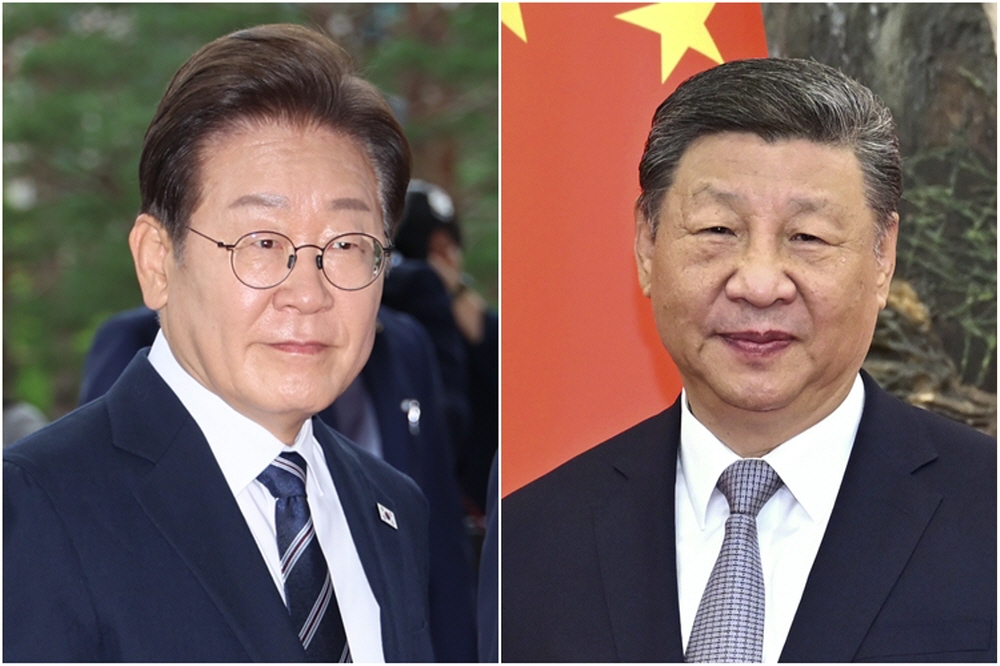- #South Korea

Key Takeaways
- As the
free trade era gives way to strategic rivalry, APEC must shift from
liberalization toward managing interdependence among competing powers.
- Korea,
as this year’s host, is uniquely positioned to bridge divides and champion a
pragmatic framework balancing resilience with cooperation.
- The
summit’s success will depend on Korea’s ability to turn ambition into
achievable outcomes — proving that multilateralism can still adapt in a
fractured world.
Let’s
face the elephant in the room: the age of the free trade order is over.
The
once-unstoppable march of globalization has now splintered into a landscape of
rivalry, fragmentation, and strategic protectionism. This is not a passing
phenomenon tied to Donald Trump, but a defining reality of our era – one that
is likely to endure well beyond his time. What we are witnessing is a return to
an era reminiscent of great-power mercantilism – a world where powerful states
pursue self-interest above all else, weaponizing trade, technology, and
resources as tools of influence. Unlike
during the Cold War, when major powers at least extended support to weaker
states within their respective blocs, today’s environment appears even more
ruthless, defined by a survivalist logic of every nation for itself and by the
relentless pursuit of national interests through economic and technological
dominance.
Let us
now pause and ask ourselves: what purpose does the Asia-Pacific Economic
Cooperation (APEC) serve in such a world?
What Is APEC and How Has Its Role Shifted?
Since
its founding in 1989, APEC has been central to advancing trade liberalization
and economic integration across the Asia-Pacific. Its original mission was
clear: to reduce barriers, promote policy coordination, and give both large and
small economies a voice in shaping regional commerce. Though never a formal
organization, APEC long served as the guardian of an open and inclusive trading
regime. Over time, its agenda expanded beyond tariffs to include cooperation on
connectivity, digital trade, capacity building, and supply chain integration –
recognizing that openness requires institutional frameworks to address
infrastructure gaps, regulatory standards, and technological change. This
evolution sustained APEC’s relevance even as the global trade landscape became
more complex.
However,
the summit in Port Moresby in 2018 marked a clear break from the past. For the
first time in APEC’s history, leaders failed to issue a joint communiqué. The
deadlock, driven by intensifying US–China rivalry and disagreements over WTO
reform, “unfair trade practices,” and sustainable development clauses, revealed
the fragility of what had once been a model of pragmatic cooperation. I was
there, covering the event, and I can still remember the jolt that ran through
the media room. The usual chatter stopped; reporters stared at their screens,
stunned, as word spread that APEC – the forum built on consensus – had fractured.
In that instant, the familiar script of summit diplomacy fell apart. The free
trade order was no longer a given; geopolitics had taken center stage,
eclipsing the spirit of cooperation that once defined APEC. This was a sign
that the old consensus behind free trade was beginning to crack.
In the
years that followed, that warning proved prophetic. Tariffs, sanctions, and
export controls are no longer exceptions; they have become the grammar of
great-power competition. The question now is not whether APEC can issue a
communiqué, but whether it can remain relevant in a world where the very
premise of free trade is being rewritten.
Why
APEC’s Consensus Still Matters, and How It Must Evolve
What
once seemed a gradual erosion has now reached a tipping point. Tariff wars,
weaponized supply chains, and the politicization of economic interdependence
have shattered the assumption that openness naturally serves shared prosperity.
The return of unilateral measures by major economies and the growing rhetoric
of economic security over free trade reflect a profound shift:
the language of globalization is giving way to the language of control and
resilience. Multilateralism, long the stabilizing force of global commerce, is
now under siege, and institutions like the WTO are struggling to contain the
centrifugal pressures of great-power rivalry.
In this
fractured environment, APEC’s relevance may seem diminished – yet that
perception misses the point. Precisely because the free trade consensus is
fading, APEC’s model of voluntary cooperation and consensus-based dialogue has
become more essential than ever. It remains the only regional forum that brings
the US, China, and other major Asia-Pacific economies together under a shared
framework, however fragile that consensus may now be. Even amid rivalry, it
offers a structured space to manage disagreement and prevent economic
fragmentation.
To stay
relevant and remain a meaningful platform for regional governance, APEC must
evolve beyond the nostalgia of liberalization. Its next communiqué should not
seek to revive a bygone era of free trade, but to articulate a post-liberal
framework grounded in managed interdependence – one that accepts
competition as an unavoidable reality while preventing it from descending into
coercion or isolation. The challenge is not to restore the old order, but to
shape the rules of a new one that remains cooperative, even if no longer
entirely free. Rather than chasing the unattainable ideal of borderless
markets, APEC can instead champion a rules-based approach that preserves
connectivity through transparency, predictability, and cooperation in critical
areas such as supply chain resilience, digital governance, and green
technology.
By
articulating this pragmatic vision, APEC can reaffirm that rules-based order
still matters, even in a transformed guise. The challenge for its host nation
Korea will be to balance ambition with credibility – crafting commitments that
are modest yet enduring, and that keep open the possibility of cooperation when
almost every other channel is closing.
Korea’s
Role: The Right Country to Shape Managed Interdependence
Korea’s
hosting of APEC this year could not come at a more fitting moment. Few nations
capture today’s global paradoxes as vividly as Korea: deeply dependent on trade
yet exposed to geopolitical risk, technologically advanced yet strategically
vulnerable, democratic yet pragmatic in diplomacy. These contradictions do not
weaken Korea’s position – they make it uniquely suited to help shape what the
region now needs: a framework of managed interdependence.
If the
end of the free trade era is inevitable, then Korea is the right place to chart
a new vision – one of economic coexistence among competing powers, built on the
preservation of interdependence without allowing the global system to fracture
under strategic pressure.
By
hosting APEC, Korea can move beyond defending a fading free trade ideal and
instead champion a pragmatic vision that balances competition with cooperation.
Its ability to navigate between major powers, its technological sophistication,
and its diplomatic tradition of bridge-building position it uniquely to
translate the concept of managed interdependence into practice.
Korea
sits at the intersection of advanced and emerging economies, of suppliers and
innovators, of alliances and pragmatic partnerships. From this vantage point,
it can help shape frameworks for resilient supply chains, digital governance,
and technology security – ensuring that economic resilience does not come at
the expense of inclusivity.
Korea’s
own experience also offers a compelling model of coexistence under pressure.
Once the frontline of the Cold War, and despite living under the constant
shadow of North Korea’s nuclear threat, it has built a resilient democracy and
an open, innovative economy. That achievement is not merely national; it
reflects the very balance the region now seeks, proving that security and
openness, competition and cooperation, can indeed be managed together.
Making
the Summit Matter
APEC
this year is a test of whether cooperation can still function in a fractured
world. To make this summit meaningful, Korea as the host nation, must translate
ambition into plausible design – turning lofty language into practical outcomes
that endure beyond the headlines. The key is to pursue a minimum viable
consensus: focus on modest yet tangible deliverables in areas such as
digital trade, supply chain mapping, and decarbonization research – achievable goals
that can anchor collaboration even among wary members.
To make
those commitments last, Korea must mediate to make APEC members to pair this
pragmatic agenda with light but credible follow-up mechanisms. Establishing
small, results-oriented task forces on digital governance, green technology,
and supply chain resilience – with clear timelines and regular progress reviews
– would help ensure that even limited agreements translate into sustained
cooperation.
Korea
should also aim to make APEC as a platform for structured bilateral and
minilateral engagements. Quiet working sessions among major players – from US-China
dialogues to ASEAN–middle power groupings – can yield practical side agreements
that later reinforce the broader framework. Seoul’s role should be that of an
orchestrator, ensuring that legitimacy stems from inclusivity rather than
dominance. Korea can and should act as an honest broker – bridging divides
without diluting ambition and turning a performative gathering into a
purposeful one.
Ultimately,
this APEC summit is a live experiment in whether managed interdependence
can replace the fading ideal of free trade. The global order may be
fragmenting, but the demand for credible rules and predictable cooperation
remains. If Korea can shepherd even modest, durable agreements that embody
resilience, digital trust, and green competitiveness, it will prove that
multilateralism is not entirely dead – only waiting for new architects.
